For early-stage startups, substance is the most important thing.
Author: @mattigags
Translation: Deep Tide TechFlow
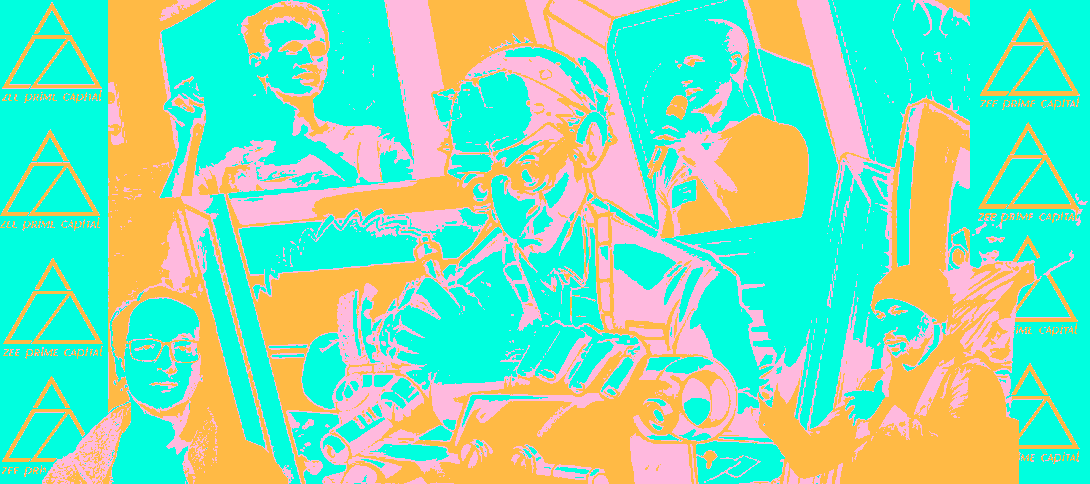
The Unseen Truth
“Fast learning, slow remembering. Fast proposing, slow processing. Fast is discontinuous, slow is continuous. Small and fast systems guide large and slow systems through the accumulation of innovation and occasional revolution, while large and slow systems control small and fast systems through limitation and stability. Fast captures our attention, while slow possesses real power.”

Excerpted from “Rhythm Layering: How Complex Systems Learn and Continue to Learn”
Narratives are not designed for investors or founders, but for consumers and traders. For long-term investors, focusing on narratives is not the best strategy. Either get involved at the beginning of an event that has the potential to become a narrative, or wait until the situation becomes clear before taking action.
As cryptocurrencies gained fame for creating massive wealth in a short time, many entrepreneurs flocked to the field between 2017 and 2021. Founders in this industry gradually shifted their focus from solving real problems to pitching to venture capitalists (like us) to capitalize on the flow of attention. And we were drawn in.
The culture of founders in the cryptocurrency space shifted from focusing on substance to focusing on process. Everyone began to mimic the same routines and once-effective buzzwords. However, when everyone uses the same methods, the effectiveness diminishes.
We do not believe that relying solely on processes can yield good results. Imagine if everyone is doing KOL marketing, how would you stand out among many using the same strategy? Intense competition quickly depletes growth opportunities.
In our conversations with founders in the cryptocurrency space, we found that genuine curiosity has become increasingly rare. Many start from buzzwords and narratives, trying to build products or just raise funds around them. As a result, their presentations became their “products.”
People often confuse trends with culture. They rely on those fleeting narratives rather than building from fundamental principles. As imitation increases, many products ultimately become indistinguishable. Founders and investors often forget how to think independently, as the noise and trends in the cryptocurrency space seem to be the quickest path to wealth.
In the cryptocurrency industry, no one builds monopolies because everyone is competing on narratives. To establish a monopoly, inspiration and motivation must come from the grassroots.
Thus, answering the question “What are we looking for?” becomes increasingly simple, even though we have taken many detours. We are looking for genuine curiosity and unique beliefs that are not influenced by trends (fast). We believe that to create something great, one must be able to deeply construct and integrate their ideas and products at a cultural level.
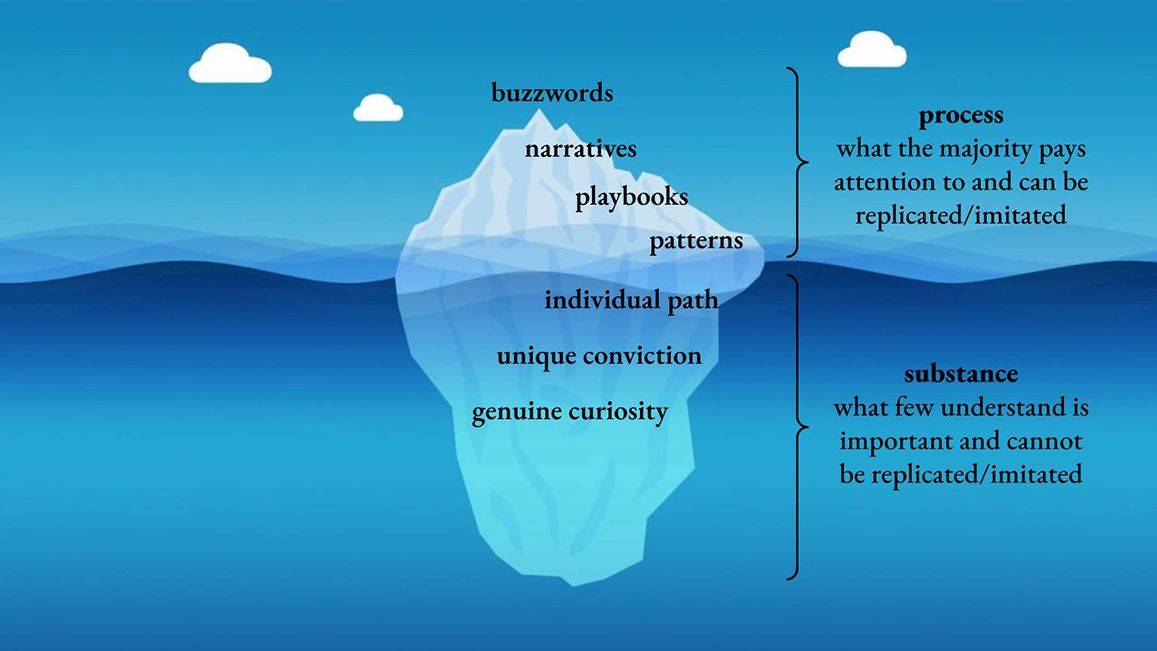
Buzzwords and narratives are like fashion, easily replicated and imitated. Notice that during periods of frenzy, everyone ends up doing the same thing because they only focus on the surface. Founders often think, “I am discovering X,” where X is that trendy buzzword or narrative-compliant concept.
Most founders achieve true innovation through accidental experimentation. The core almost always stems from genuine curiosity. Their approach is, “I am researching this problem; let’s see what we discover.” This is a solid foundation for building meaningful outcomes. Ideally, this also means uncovering an unseen truth.
You Go Against the Grain
This may just be a reworking of Peter Thiel's “Secrets”, but here is our perspective. If you listen to the various discussions and narratives now, which ones do you think are the truly obvious truths, and which are the obvious lies? Which are the truly non-obvious truths, and which are the non-obvious lies?
The distinction between the obvious and the non-obvious can be reinterpreted as popular versus non-popular, or knowable versus unknowable based on existing data. Taking the cryptocurrency market from 2021-23 as an example:
Obvious Truths:
Cryptocurrencies will be affected by interest rate hikes DeFi yields are unsustainable Conflicts are detrimental to cryptocurrencies
Non-Obvious Truths:
FTX is a criminal organization L2 leads to liquidity fragmentation Stablecoins are a product-market fit for cryptocurrencies
Non-obvious truths require unique insights, while obvious truths can be observed from a distance, yet still lack absolute certainty, as nothing is absolutely certain. The distinction between the two is not necessarily binary; it is more likely a continuous state.
Here is an example of placing these concepts into a 2x2 framework:
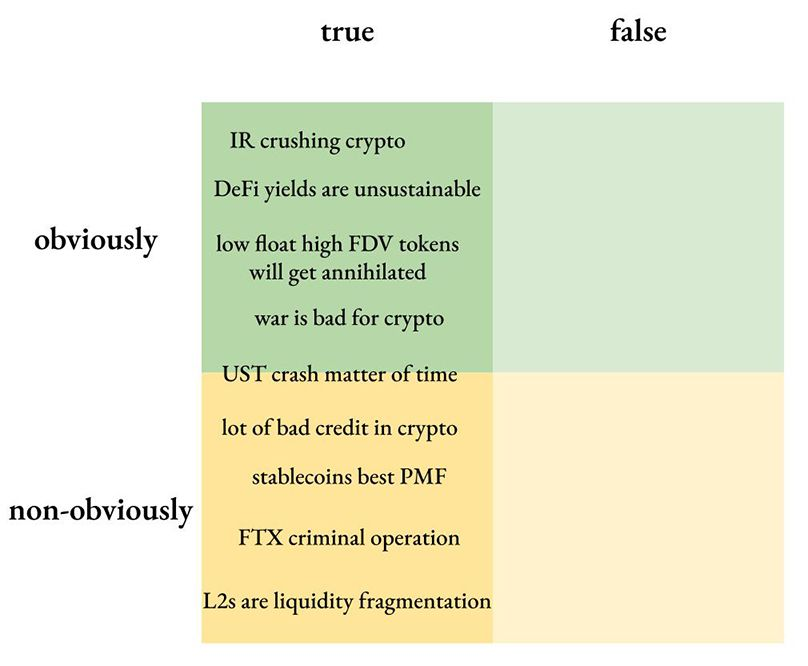
So, among the false narratives and statements of that period, what things are clearly not going to happen, and which are harder to predict?
Here is what we gathered:
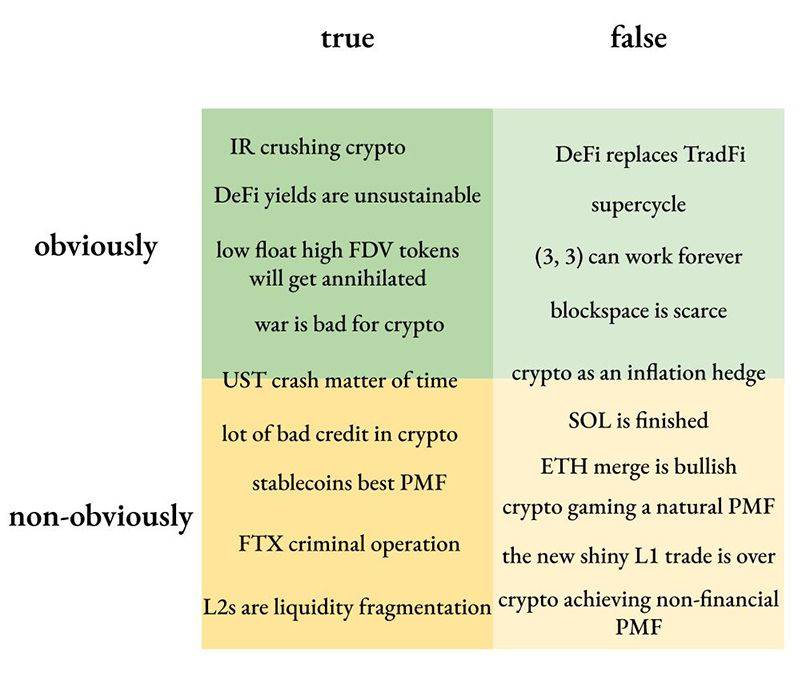
Looking back, these concepts seem clear. And looking forward, everything is filled with uncertainty, but by assessing the beliefs of founders when building products, one can see the independence of their beliefs. Because if a founder forms opinions solely based on obvious facts, and the product is not based on any non-obvious truths or fallacies, how can it grow into a great company, project, or asset?
Some people talk about contrarian thinking, but this is not an ideal way of thinking. While a hypothesis may seem contrary to consensus, it is not derived from observing consensus and forming an opposite viewpoint. Hypotheses should be analyzed from fundamental principles, unaffected by consensus.
The above examples are at a macro level, but let’s analyze a specific successful crypto project in recent years. If you were fortunate enough to receive Solana's pitch materials in 2019, you could analyze it through the 2x2 framework as follows.
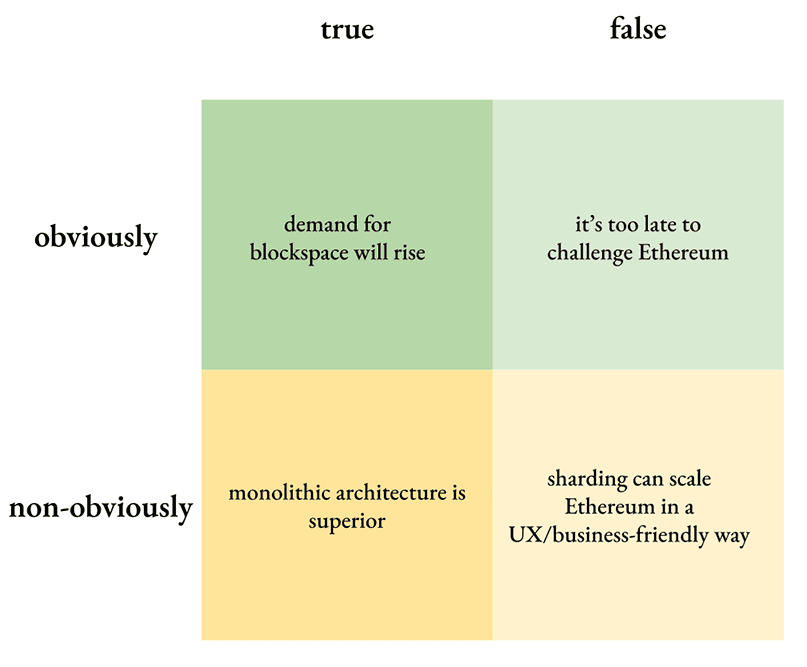
The non-obvious truth hypothesis played a positive role in Solana's development. It brought the discussion of modular versus monolithic architecture to the forefront, which was not common before. In the past, most people were accustomed to thinking in modular terms. Solana also astutely recognized that sharding technology was a dead end.
In the entrepreneurial process, being able to identify the content of each quadrant is very helpful. If your insights only stay in the obvious realm, you may lack unique value and are merely competing for market share with numerous competitors.
If your beliefs rely entirely on non-obvious things, you may be building in a vacuum, possibly lacking market demand, or just blindly guessing (if you are aware of this, that’s fine).
If you build products solely based on truths, you may fail to identify problems in existing products or models. And if you build based solely on erroneous assumptions, you may create problems that do not exist, such as believing that creator income is uneven or that market leaders' commissions are too high.
Ideas Worth Exploring
Those who innovate out of genuine curiosity are often the best problem solvers. Using our 2x2 framework to analyze your unique insights can help clarify your positioning in the market and the value you can offer.
The way to execute unique beliefs is as important as maintaining curiosity. While great ideas are rare, excellent execution is equally scarce. The ability to quickly launch products and iterate is a rare skill. Often, choosing personalized paths that temporarily cannot be scaled rather than relying on standard manuals at the beginning is a worthwhile approach.
Best practices and operation manuals are indeed useful at the right time, but should not be overly relied upon in the early stages. Only using them when the timing is right allows the market to naturally form stories and buzzwords around your product.
Many people often get it backward when starting a business—focusing first on buzzwords. Perhaps most founders are like this. But for early-stage startups, substance is the most important thing; processes are merely tools to help amplify substance.
Rather than saying, “I am discovering X,” a better mindset is, “I am solving this problem; let’s see what the results are.” This is almost an aesthetic pursuit. In other words:
“Without support, without loss… in this mindset, only do those things that are truly reasonable: no hidden fears, no moral constraints, no rule limitations, no potential constraints, no subtle attention to the forms of those around, and most importantly, no attention to oneself… his actions have no guiding images, no hidden powers; he is simply free…
…when we are completely unguarded—these moments, our most important things will manifest… consciously striving to reach this state, or pursuing freedom, or becoming anything, the appearance brought by such efforts will always undermine it.” — Excerpted from “The Timeless Way of Building” - Christopher Alexander
免责声明:本文章仅代表作者个人观点,不代表本平台的立场和观点。本文章仅供信息分享,不构成对任何人的任何投资建议。用户与作者之间的任何争议,与本平台无关。如网页中刊载的文章或图片涉及侵权,请提供相关的权利证明和身份证明发送邮件到support@aicoin.com,本平台相关工作人员将会进行核查。




